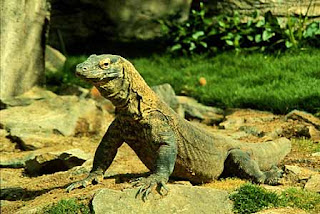Lake Toba (Indonesian: Danau Toba) is a lake and supervolcano. The lake is 100 kilometres long and 30 kilometres wide, and 505 metres (1,666 ft) at its deepest point. Located in the middle of the northern part of the Indonesian island of Sumatra with a surface elevation of about 900 metres (2,953 ft), the lake stretches from 2.88°N 98.52°E to 2.35°N 99.1°E. It is the largest lake in Indonesia and the largest volcanic lake in the world.
 Lake Toba is the site of a supervolcanic eruption that occurred 69,000-77,000 years ago, a massive climate-changing event. The eruption is believed to have had a VEI intensity of 8. It is believed to be the largest explosive eruption anywhere on Earth in the last 25 million years. According to the Toba catastrophe theory to which some anthropologists and archeologists subscribe, it had global consequences, killing most humans then alive and creating a population bottleneck in Central Eastern Africa and India that affected the genetic inheritance of all humans today. This theory however, has been largely debated as there is no evidence for any other animal decline or extinction, even in environmentally sensitive species. However, it has been accepted that the eruption of Toba led to a volcanic winter with a worldwide decline in temperatures between 3-5 degrees C, and up to 15 degrees C in higher latitudes.
Lake Toba is the site of a supervolcanic eruption that occurred 69,000-77,000 years ago, a massive climate-changing event. The eruption is believed to have had a VEI intensity of 8. It is believed to be the largest explosive eruption anywhere on Earth in the last 25 million years. According to the Toba catastrophe theory to which some anthropologists and archeologists subscribe, it had global consequences, killing most humans then alive and creating a population bottleneck in Central Eastern Africa and India that affected the genetic inheritance of all humans today. This theory however, has been largely debated as there is no evidence for any other animal decline or extinction, even in environmentally sensitive species. However, it has been accepted that the eruption of Toba led to a volcanic winter with a worldwide decline in temperatures between 3-5 degrees C, and up to 15 degrees C in higher latitudes.Geology
The Toba caldera complex in Northern Sumatra, Indonesia consists of four overlapping volcanic craters that adjoin the Sumatran "volcanic front". The youngest and fourth caldera is the world's largest Quaternary caldera (100 km (62 mi) by 30 km (19 mi)) and intersects the three older calderas. An estimate of 2,800 km3 (670 cu mi) of dense-rock equivalent pyroclastic material, known the Youngest Toba tuff, was blasted from the youngest caldera during one of the largest single explosive volcanic eruptions in geologic history. Following the "Youngest Toba tuff eruption", a typical resurgent dome formed within the new caldera, joining two half-domes separated by a longitudinal graben.
There are at least four cones, four stratovolcanoes and three craters visible in the lake. The Tandukbenua cone on the NW edge of the caldera is relatively lacking in vegetation, suggesting a young age of only several hundred years. Also, the Pusubukit volcano on the south edge of the caldera is solfatarically active.
 Visit Indonesia
Visit Indonesia Visit Indonesia
Visit Indonesia Visit Indonesia
Visit Indonesia Visit Indonesia
Visit Indonesia 

































